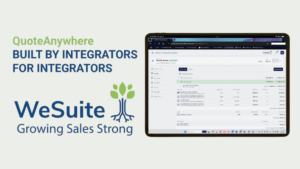Sales Strategies: Sales Pipeline and Running Marathons
Building and managing your pipeline, draws analogies to training for and running a marathon. Here’s how.

By Tracy Larson
Pipeline is a term every salesperson and sales leader has heard many times. Typically, each is actively trying to fill and manage the sales pipeline – some with better success than others. A strong pipeline produces great benefits: an easier sales process, efficient use of time, and higher productivity rates. Bottom line: more sales.
Building and managing your pipeline, draws analogies to training for and running a marathon. Here’s how.
Mindset and training matter.
A marathon is 26.2 miles in length. Sometimes the sales process feels like that! Marathons are run by people ranging in age from teens to those who have reached senior status. Runners tackle the distance at various paces – some fast, some slow, many somewhere in between. Marathons are not for the faint of heart but, anyone can complete one with the right mindset and training.
Sales requires guts too. To run a marathon, you must dedicate time to training, you must be persevering, goal focused, physically fit and strong, and get everyone else out of your head – you own that space. As you train, it is important to monitor and measure progress, take corrective action, and continue to maintain a schedule as you approach race day. Completing a marathon is about training to continually improve performance to reach your goal. Wow! There are so many similarities to being in sales!
Pipeline development requires a plan.
Training for a marathon requires plan and schedule to help you hit your race date, handle the distance, and maintain pace. The combination of completing the physical activities required to build stamina and increase distance over time while fueling yourself properly, builds efficiencies, strength, keeps you from injury, and increases your best chance of success.
To develop your pipeline, you need a plan. You must identify specific prospecting activities to complete within a defined time frame, with the primary goal of getting meetings. Pipeline development via a solid prospecting plan, strategic management of active opportunities, and building girth throughout the pipe, is critical to reaching the 26.2 mile mark and winning the sales race.
Pipeline strength and sales stages.
For our purposes, let’s think of sales stages as the overall race distance covering the sales process start to finish. It doesn’t matter if your sales cycle is short, longer or varies. You will adjust the cadence of completion of sales stages in the cycle, to suit your sales reality.
Defined sales stages are an easy way for salespeople, sales leadership, and executives to speak, understand and review a common sales language. Sales stages might be: prospect, lead, opportunity, request for quote, in process, in negotiation, won, lost, on-hold. Each defined stage aids in understanding where each opportunity is in the process, much like runners understand key milestones in the race.
Defined pipeline percentages express position in the pipe considering the whole – like mile markers. For instance: 10% initial contact, 25% first meeting scheduled, 40% site walk through, 60% initial proposal, etc. Defined data points allow you to quickly run real-time reports from your CRM showing how many opportunities are in each stage of the pipeline. Defining pipeline percentages and what each means leads to more specific reporting. Consider these “sales vitals” for each opportunity.
The pipeline is easiest to manage when defined in a way that illustrates how sales stages relate to the health of the pipeline. The early pipeline stages for instance (i.e. prospect, lead), are where it is important to have high volume. The more prospects we have, the higher chance we are building a healthier, more robust pipeline overall, as opportunities fall off or progress. When you look at your pipeline you should be able to easily identify how robust it is in each stage of your sales process. Knowing how full (or not) your pipeline is in all percentages of the pipe and relative to sales stages, signals you to turn up the activity rate where needed and shows you how likely you are to finish the race strong. Using your CRM to filter these and other key data points make it easy to know how healthy your pipeline really is at all times.
Sales – like running – is a numbers game.
There is no way around it, the more prospects and leads in all stages of the process, the higher your chances are to land new sales. Just like athletic training, establishing the activities you will perform to achieve the numbers needed is a must. Performing activities and tracking success is also a must but, top performers know it takes more than that. To keep things moving, you must continually determine the next action and set the next goal. Strategy – knowing what you want from performing actions is key. Remember, you must be ready and willing to recognize and shut down what isn’t working so that you remain focused on the activities and strategies that produce the best results. Knowing how many and what size opportunities you need in each stage of the sales cycle and pipeline is critical to success. Running improvements are measurable, trackable, and numbers based. Just like sales.
Prospecting activities build pipeline.
There are many ways to build pipeline through active prospecting. Prospecting is strength training in sales. Pick what works for you and do it! Hire a lead gen service, send eblasts, scour LinkedIn, step up digital advertising, ask for referrals, yup – even cold call! Today it is possible to know if someone has opened, read, or clicked on information sent. This is all good because it feeds the side of our brain that loves to be negative with good reinforcing evidence. The key to building your pipeline is to do the work! Using a CRM easily validates the activities working for you, which to leave behind, and next steps to take. It provides immediate, actionable “ROI”. Even greater, a centralized database returns so much more data you can use to dig deeper to keep you on course or take a different route. Evidence of prospecting success helps you to build more strongly.
Monitoring and tracking pipeline health.
Key to success is to review your pipeline regularly. One of my colleagues starts every day by reviewing her pipeline. She configured her report to provide key data making it easy to understand the next action for each opportunity and ensuring that no good opportunity is left behind. This is critical – she is using live sales data to manage her pipeline daily! She clearly knows how full each stage of her pipeline is and where she needs to increase activity. She also can predict her forecast for winning sales because her pipeline is real. She is more realistic. That helps her to maintain cadence in prospecting, steer her prospects to their next steps, pick up the pace with those who are ready to sign, and back off on those not ready. Her pipeline supports her in her sales race.
Pipeline success builds healthy salespeople.
People who saw me head out daily to train used to ask me why I wanted to run a marathon. I wanted to run the NYC Marathon and the truth is that I wasn’t sure I could actually run 26.2 miles. You see, running a marathon didn’t come naturally to me. I had to work at it. I followed a marathon training plan for 16 weeks. I ran many, many miles in all kinds of weather. I got hit by a car. I had terrible shin splits two weeks prior to race day due to a rookie mistake. But I was determined to reach my goal.
As salespeople we are always in training, gaining experience by doing. Salespeople who continually up their game, who build and track their sales pipeline, update sales stages, and use data to analyze their wins and losses, are healthier and better at sales. They learn to use tools and data to their advantage. As a result, they establish a pipeline that continues to pay off in new sales.
Finish the race.
In this challenging sales world, stay the course! Use your CRM to confirm that you are putting forth the right efforts, that you’ve got what you need in all stages of your pipeline, and that you can finish the race strong, achieving the goals you set for yourself.
Recent Post

WeSuite Expands Its QuoteAnywhere to a Full-Featured Stand-Alone Sales Platform
WeSuite, a manufacturer of award-winning sales management software for security technology sales and service providers, is excited to announce the expansion of its web-based sales software, QuoteAnywhere, to a full-featured, stand-alone, lead-to-close sales platform.

WeSuite President Tracy Larson Inducted into Security Sales & Integrations Industry Hall of Fame
WeSuite, a manufacturer of award-winning sales management software for security technology sales and service providers, announced today that Tracy Larson, WeSuite President and Co-Founder, has been inducted into the Security Sales & Integration’s Industry Hall of Fame.

Are You Getting the Most Out of Your CRM? Start by Asking these 5 Simple Questions
Your sales pipeline is your lifeline. It tells you where your deals stand, where your time should go, and how close you are to hitting your number. And your CRM? It’s the tool that keeps your pipeline in check.

Is There a Secret to Closing Security Sales Faster? Here Are Seven!
Pushy, high-pressure sales tactics turn off buyers – we’ve all been there! Fortunately, you can increase your on-the-spot close ratio by being buyer and solution oriented with sales automation software like QuoteAnywhere from WeSuite to support your sales efforts.
